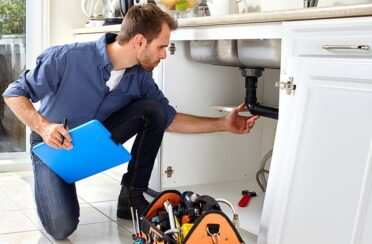 While most of us are familiar with the deadly consequences of Carbon Monoxide (Co) in our homes, Radon Gas (Rn) may be something you are not familiar with.
While most of us are familiar with the deadly consequences of Carbon Monoxide (Co) in our homes, Radon Gas (Rn) may be something you are not familiar with.
Radon gas has very important health risks that every Calgarian should be aware of. The Canadian Cancer Society says that radon gas is the leading environmental cause of Lung Cancer and is the most deadliest and overlooked health risk today. Health Canada estimates that 3,200 Canadians will die annually from radon exposure.
Like carbon monoxide, radon is a colorless, odorless gas and has no taste. Radon gas occurs naturally in all soils and is the result of decaying uranium, radium, thorium as well as other radioactive elements present in all soils. Radon gas enters your home through cracks in the concrete floor or foundation as well as other openings such as sump pumps and floor drains.
Almost all homes will have some radon gas present, however the concern is when it accumulates in low areas such as our basements. In Calgary we tend to extend our living space by developing our basements into man caves, play areas for the kids or additional bedrooms. This leaves the occupants of these areas to possible high-risk exposure to radon gas.
The Canadian radon guideline is 200 Becquerels per cubic meter. In Calgary we are not excluded to high exposures of radon gas and there are very interesting radon studies going on at the University of Calgary.
Testing for Radon Gas
The only way you can be sure that you are under the Canadian guideline on radon gas is to test your home. Testing will give you peace of mind or alert you to the need to mitigate the Radon issue. At Arpi’s we suggest the long-term testing procedure and participating in the Evict Radon study launched by a researcher at the University of Calgary.
What to Do if My Radon Results are Above the Canadian Level
If the test reveals that you have a radon level exceeding 200 Becquerels, the installation of a system called Sub-Slab Depressurization is used as the mitigation system for Radon. Sub-slab depressurization is basically a hole in the concrete where a plastic pipe is sealed in the void below floor, which is then connected to a fan that ventilates the air, under the basement slab to the outdoors.
Since November 2015 the Canadian building code has included radon mitigation into the building code. If you have a home built after this time you may be wondering why there is a plastic pipe sticking out of your floor. Hopefully you have already tested your home and your results are under the acceptable levels. If not, we can complete the installation for you.
If you have a Radon Mitigation system already installed, we can service this and ensure that it is working the way it is intended and that it is keeping your levels in a safe range.


